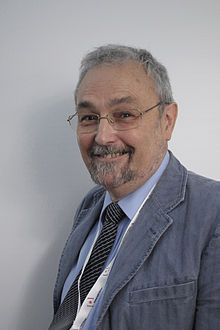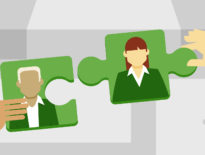“If I had a son, I’d love him to be just like you.” Those words coming from a client put a smile on my face.

If you know me, then you know I care a lot about the people I interact with. What’s life without those you live it with?
Caring, showing empathy, and striving to understand other people’s needs are core tenants of my day-to-day philosophy. So, when I received that email, I couldn’t help but feel fulfilled.
But this got me to thinking, how do you actually build and develop meaningful relationships? And, especially in our context — as organizations interacting with individuals — how can we foster that same (or at least similar) connection?
Philanthropy tends to be fairly transactional — I give you some money, you send me a year-end appeal — and less relational — I give you some money, you ask me about my life story and connection to your mission. This could be (and most likely is) a contributing factor to dismal donor retention rates.
That’s in part because genuine relationships are hard to foster and develop. Dr. Robin Dunbar, an evolutionary psychologist at the University of Oxford, and one of the foremost researchers on the subject of “friendship,” is credited with the creation of “Dunbar’s number.” The number represents the approximate size of an individual’s social circle. It’s a range between 100 and 200 in case you are keeping score at home.
But, more interesting is Dunbar’s research on close relationships. Fifteen, that is the number of close relationships — including family — a human being tends to have. That’s not that many. Yet, when you think about your own social circle and start to count off the names, it sounds about right.
What impact does that have on our task to cultivate meaningful relationships with donors? A lot, actually. In part it suggests that donors may not have the capacity to maintain a “top fifteen” relationship with your organization, remember, that is a short list. It also reinforces the notion that as fundraisers, we have to be extremely cognizant of our every interaction with a donor. Let’s identify three ways we can strive to do this in our lives, and professionally, in our interactions with constituents.
Strategic listening
Ground zero of relationship building is listening. Strategic listening, is simply employing techniques to best comprehend and understand what someone is saying. Neurologically, there are much more complex pieces at play, and I won’t even pretend to suggest I know enough to address them, but a variety of academics have studied “listening,” and some of the “best” techniques are relatively easy to employ.
For example, there are “before-listening” strategies, which tend to entail connecting with relevant content and predicting what you might learn while you’re listening. These two techniques strive to build familiarity with whom you’ll be engaging before you actually are.
A good example of this in our professional lives would be researching a donor before calling them. What information about them do you already know? If there is a note in the database that Jane really loves baseball, be prepared to connect with her on that topic. Don’t be surprised when you start talking about singles, doubles, and triples. Connect with relevant content and predict what might be coming your way.
There are also “during-listening” strategies. These include listening for answers, taking notes, and re-listening or backtracking.
First, as you engage in conversation always focus on the answers someone shares with you. These answers will feed into future questions, and will help you identify a pattern and flow in your conversation. Second, don’t be afraid to take notes. Sure, that is a bit tricky when you are face-to-face with someone, but don’t be ashamed to write down critical pieces of information, even if that means you take your eyes off of who you are with. And third, re-listen and backtrack your conversation. Don’t be afraid to ask the same question twice, or even three times, and don’t hesitate to ask for clarification regarding an earlier point or comment.
Then of course, there are “post-listening” strategies. After listening to someone, how can you distill all of the information you collected? Three techniques include responding, summarizing, and extending (finding other relevant materials similar to what you had just discussed with someone).
Although simple (and not necessarily worth diving deeply into here), these three approaches (which you most likely already do naturally) will help with comprehension and understanding of what someone has shared with you.
In addition to strategic listening, there are other techniques that aid in building meaningful relationships too.
Why why why why why
What does the most efficient automobile manufacturing process in the world have to do with developing meaningful relationships? More than you might think. Toyota Motor Corporation, maker of the Camry, Corolla, and myriad other vehicles has a core corporate principal that we can apply in our day-to-day lives, “Ask ‘why’ five times about every matter.”
Why? Why? Why? Why? Why? That’s the trick (one of many) that allowed for Toyota to grow rapidly and become one of the most successful Japanese corporations in modern history. Asking why has roots deeper than Toyota, but their application of the technique and steadfastness in implementing it speaks volumes to its power.
In one-to-one relationships asking why (many times) produces the same results it does in the corporate world — you get to understand the root cause of a problem, and that is unbelievably powerful.
Part of relationship building is being able to “read the room,” and when the person you are engaging with tells you their true feelings, you have less “gut feel” to go off of and more concrete evidence. Asking why will help deepen your understanding of a situation and will also allow the person you are engaging with to open up with you.
The “five why’s” is a crucial technique I employ both personally and professionally that you should try too.
Process and procedure
Then, last but not least, we have our third strategy for building and maintaining meaningful relationships — process and procedure.
The concepts we addressed above are great, but the reality is, if you work for an organization you’ll struggle to keep up with the sheer quantity of relationships you need to develop. Major gift officers can attest to this being true (too many prospects in a portfolio is just part of the fun!).
To combat this you need to think high-level about creating processes and procedures to support your cultivation efforts. That includes using the tactics laid out above, but also relying on technology, and other supports to boost your efficiency.
Take for example your donor database. That’s a piece of technology that should support your “develop meaningful relationship” goals. When you need to be refreshed on “What is Jim’s connection to our mission?” you should be able to check the database and get your answer. Your brain, albeit an amazing computer, isn’t the best at remembering things, that’s why you need processes and procedures to help.
Plus, at the scale you are working, it would be unrealistic to manage hundreds of relationships. Remember, when you meet with a donor they have no clue that you have another one hundred or so in your portfolio. Just like with service work (waiting, sales, etc.), you have to put on your best show for the person you are interacting with right now, because for them, they think they’re the only one.
These same systems and procedures are not limited to the professional world. Monica, which touts itself as being the “CRM for your personal life, not your business,” exists explicitly to manage relationships with your friends. Obviously developing meaningful relationships at scale is tough, but relying on technology to help is a must.
Applying this at your shop
On both personal and professional levels many people strive to find, develop, and maintain meaningful relationships. When it comes to doing that with our donors we have a few simple techniques to employ. Most importantly, at your shop, make sure you have the tools and resources to actually make it happen.
Good luck!






